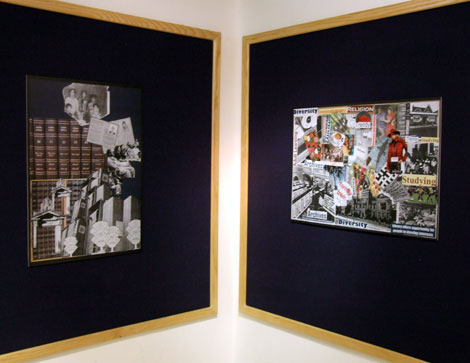
Being Clear and Concise
Identifying Problems in Questions of Travel
Showing Awareness
Being Clear and Concise
Presenting information to others involves a number of vital challenges. If your research has gone well, you may find that you have amassed a very considerable amount of information. However, it may only be a small portion of this information that forms the final layout of the learning package. You need to present your information practically, clearly, concisely. You must balance enthusiasm with a sense of critical awareness. Better to present only one aspect of the research area you have covered effectively, than to take on too much and create a confusing set of ideas, questions and images.
You cannot expect to swamp the audience with too much information and expect them to be interested. At the same time, you need to create enough detail so that people will want to look at your work more than once.
- How do you decide what to present and what to cut out of your final draft?
- How much text do you need and how many images?
- Is there a clear overall structure to your learning package that can simply be followed by the audience?
- Is it written in a plain language?
- Does it avoid obscure terms (or explain them if they are necessary)?
- Is it free from academic jargon?
- Does your learning package entice an audience into your company?
- Does it inspire?
There are no hard and fast rules. As always, getting advice from others before you publish or print anything is absolutely vital. Even at a late stage, you need to be open-minded about changes other people might suggest. In the case of some areas of research, some crucial issues emerge that you cannot afford to ignore. If we are presenting information to others, we need to be sure that we respect different cultural outlooks and take many different perspectives into account.
<return to top>
Identifying Problems in Questions of Travel
The photography of Stone and Caddick are a good example of why this is so important. It soon became clear that the Benjamin Stone and Helen Caddick archive collections presented some very important and difficult issues to discuss. With critical awareness, it became clear that there were real dangers in viewing these pictures without understanding the racial perspectives held by Stone and Caddick. Both lived at a time in the late 19th century when the culture of the British Empire held highly problematic views of cultures as ‘exotic’. How could this be constructively confronted in the learning package?
This issue was to become, in a sense, the central research issue behind Questions of Travel. Looking more closely at Stone and Caddick’s pictures of other countries, we can hardly fail to notice their use of terms that we now consider offensive, such as ‘hindoo coolie’, ‘savage’, ‘mulatto’. In this sense, the photographs of Stone and Caddick did not represent authentic views of other cultures, but the perspective of privileged travellers whose colonial gaze is evident in their view of the ‘others’ they sought to portray.
Meanwhile, other complicated issues started to emerge though the study of the life of Benjamin Stone with those of Helen Caddick. Women in England were themselves often given roles and travel was perceived as being the domain of men. As a female traveller decades before women were able to vote, would Caddick have empathised more with the subjects of her photography than Stone, a member of parliament, and a member of the late Victorian national elite? Dealing critically with issues of class cannot be done without considerations of gender and class.
<return to top>
Showing Awareness
Dealing with important and sensitive areas like ‘race’ in the photography of Benjamin Stone and Helen Caddick means directly showing awareness of the key issues and different political standpoints at stake. You will not be able to explain every aspect of their lives; you should aim at presenting balanced information so that others have the tools to come to their own conclusions. Rather than trying to hide from such issues, work with the problems you face in presenting materials. For instance, the first idea of a title for the exhibition on Stone and Caddick was Pleasures of Travel (this was taken from the advertisement of the public lecture Stone gave in Birmingham in 1874. However, it was decided that Questions of Travel was more appropriate as a way of including the viewer in a ‘discussion’.
Furthermore, it was also decided to deal with the issues surrounding the problematic way Stone often titled and organised his photographs head on. The issues relating to the photograph captions were discussed as a critical way of learning about the history of race, rather than avoiding the difficult subject. Hopefully, this empowered the exhibition, rather than offended the viewer. The striking visual photographs used became tools to understand late 19th century attitudes more deeply. Rather than merely celebrating Stone and Caddick’s photography, the information was presented to question its nature and show how the presentation of other countries, cultures and landscapes has always been problematic. The two sections of Exploring Empire and the Races of Mankind do not just celebrate the photographs shown, but highlight their contradictions.
<return to top>
Author: Dr Andy Green
Image: Dr Andy Green
|
|
|